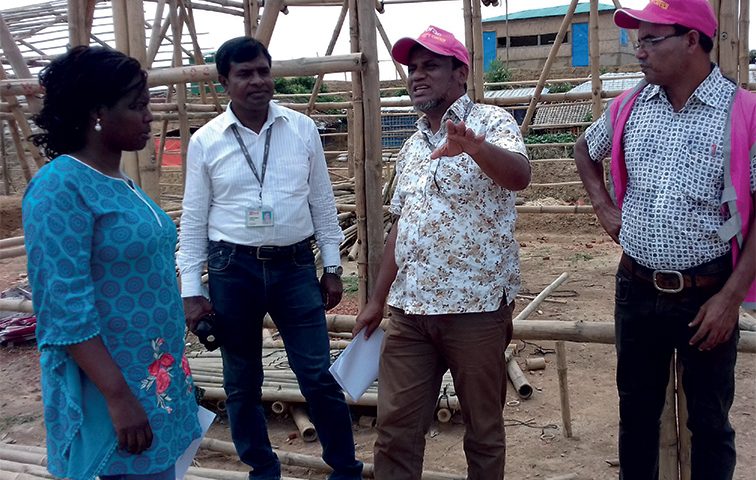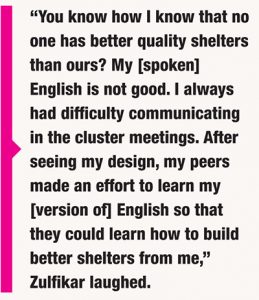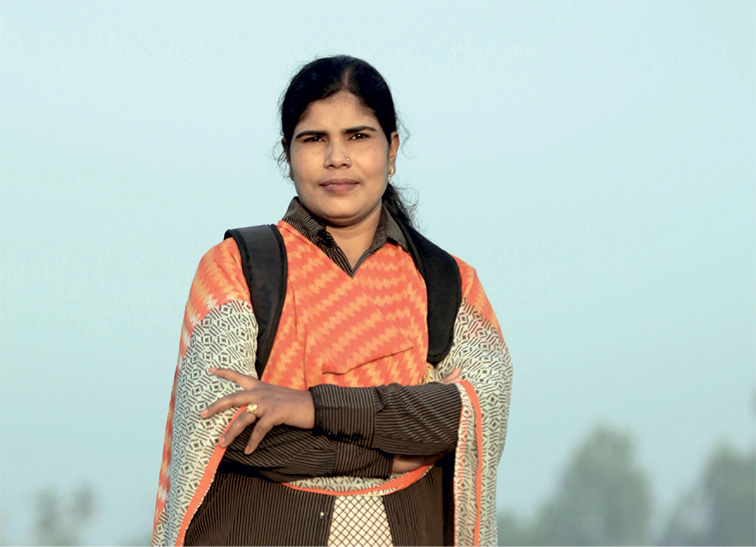
Putting the law to work in remote Bangladesh
March 24, 2019
Tapping into the youth force the right way
March 24, 2019How to provide shelter to a millions of people: lesson learn from Cox’s Bazar

“I wanted to help the Rohingya people in any way that I could when they came to Bangladesh. I took this position as a way to do exactly that.” – Zulfikar Ali, Shelter Specialist
Fifty-two-year-old Zulfikar begins his day early, getting up soon after the sun rises to attend the morning briefing session in the camps. Zulfikar is no stranger to humanitarian work; in fact, with 28 years of experience under his belt, he is a veteran. “I worked in the field for many years; this is what I do,” said Zulfikar.
 “The best part of our work is every one of us is on board with the same vision and aware of our role in achieving that. I have never seen such faith in one’s team anywhere else. I am not just saying that because I work here -1 say it with utter conviction. Many of us have left our homes to be here. Our family members are also immensely understanding and appreciative of the kind of work we do,” he said.
“The best part of our work is every one of us is on board with the same vision and aware of our role in achieving that. I have never seen such faith in one’s team anywhere else. I am not just saying that because I work here -1 say it with utter conviction. Many of us have left our homes to be here. Our family members are also immensely understanding and appreciative of the kind of work we do,” he said.
Zulfikar is a member of BRAC’s 2,500-strong staff providing services in a areas such as health and nutrition, water and sanitation, protection, shelter and infrastructure, in both the camps and the host communities. He joined the team in Cox’s Bazar in November 2017 as a shelter specialist.
“BRAC’s shelters are different. We have improved the basic model we started with in many ways, resulting in a design that has a range of unique features.”
These improvements are the result of the meticulous and constant experimentation which is very much part of the way BRAC approaches challenges. While building shelters, he was keeping notes of how the basic design could be adjusted to suit the conditions of the location. “I observed the direction of the wind, type of soil and quality of materials in each of the locations. When I approached my supervisor to test my first new design, he immediately agreed. No questions were asked,” Zulfikar explained.
He built the first new ‘test’ shelter one rainy April day. It collapsed the next morning. “My heart skipped a beat when I heard the news. My supervisor just asked me when I was going to initiate the next attempt. We perfected the design on our third try,” said Zulfikar.
According to him, supervisors at BRAG are not bosses, but leaders who listen to everyone and hold the whole team together. “They help us to do our best. We have now developed a model of new shelter which will be two storied and erected upon a variable height platform. That means there will be no need to cut into the hills or any fear of disrupting the fauna, and no fear of flood.”
Zulfikar has already presented the model to his supervisor and the shelter sector. “Everybody praised me – some, of course, said that it will not be going to be easy to build.” He simply thanked and told them, “Strong organisations can undertake difficult things.
Rifat Islam Esha Is a deputy manager at Leadership Communications and Employee Engagement, BRAC Communications.

